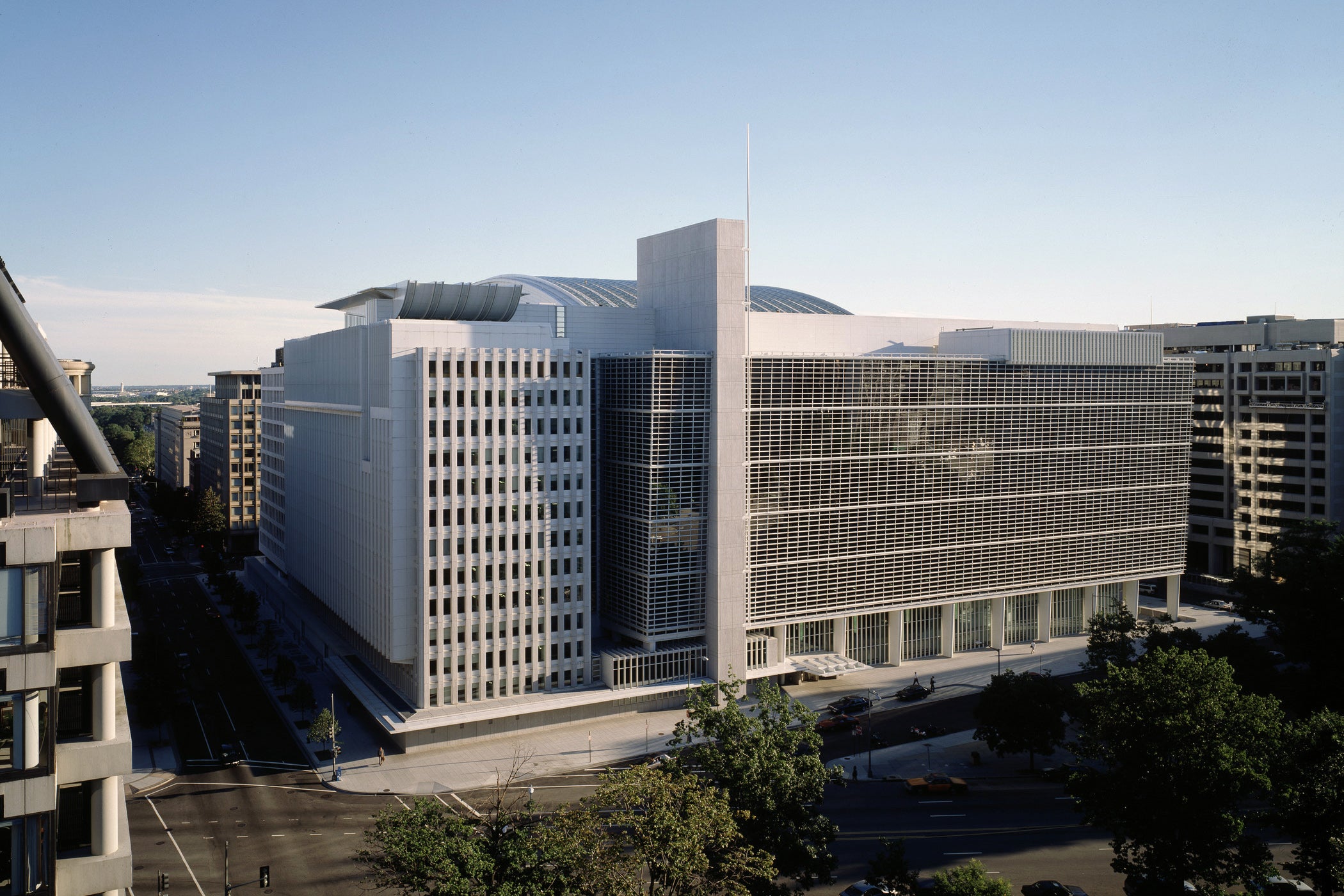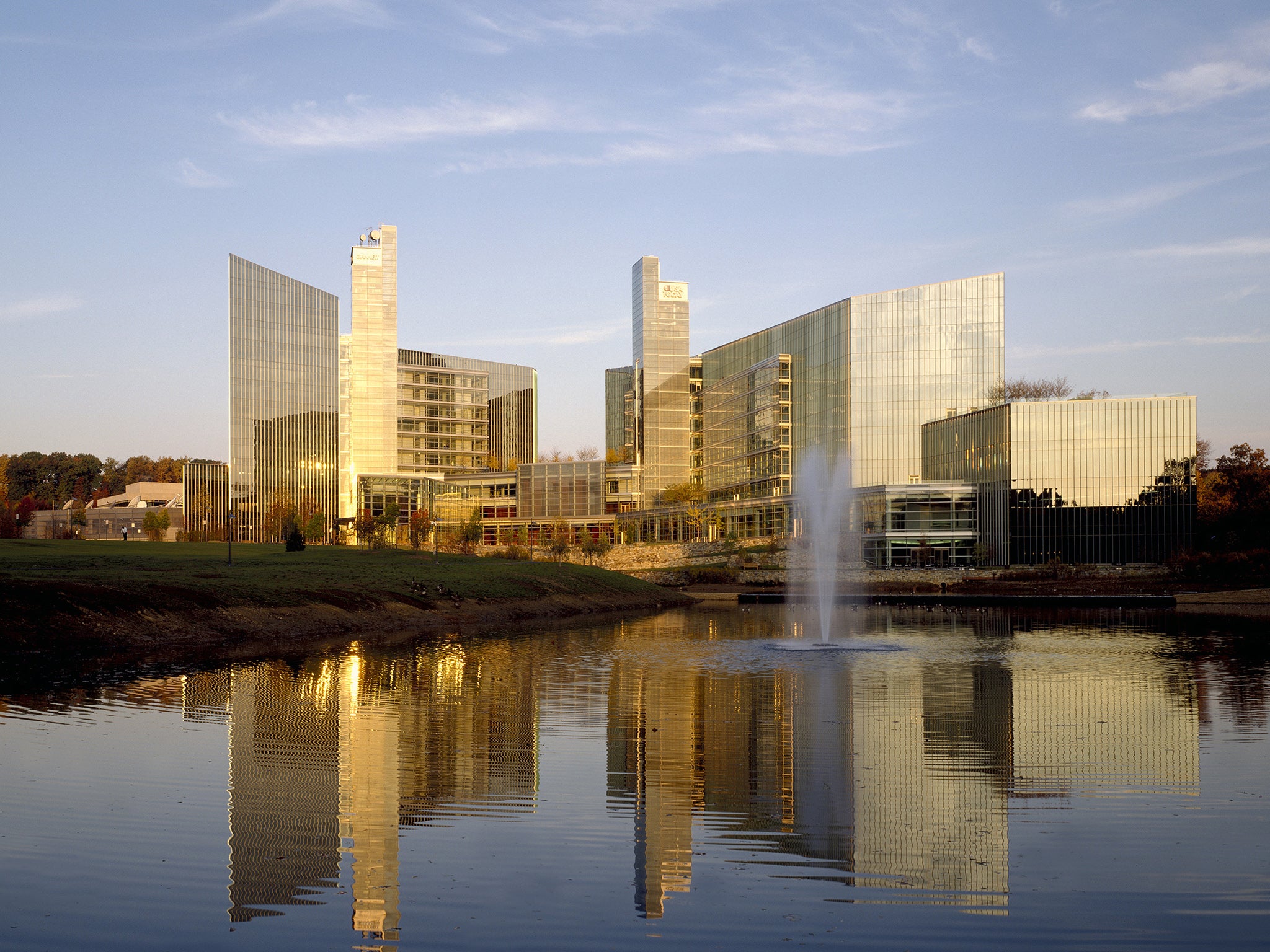
A Eugene Kohn, whose powers of persuasion helped build Kohn Pedersen Fox, the New York-based architecture firm he founded in 1976, into a global powerhouse responsible for buildings in 45 countries, including four of the 10 tallest buildings in the world, has died aged 92.
As president of the firm, widely known as KPF, Kohn focused on establishing and managing relationships with clients. In a 1986 profile, Paul Goldberger, then the architecture critic for The New York Times, described Kohn as one of the most effective salesmen in the architecture business.
He often started presentations not with renderings of buildings but with photos of KPF’s softball team, as if suggesting that the young firm would be fun to work with.
Time was precious to Kohn, whom Goldberger described as “relaxed and casual on the surface, intense and driven beneath it”. Before he boarded a plane, he would learn from a friendly gate agent who else was in first class, then request a seat next to the passenger most likely to need an architect.
“I make sure I’m not pushy or annoying, but I cultivate relationships like some people cultivate orchids or bonsai – carefully and with the long term in mind,” he noted in The World by Design, his 2019 memoir written with Clifford Pearson.
His efforts paid off. Kohn persuaded some of the country’s biggest corporations – including Procter & Gamble, Gannett and IBM, all of which were looking for new headquarters – to choose KPF over more established firms, such as Pei Cobb Freed & Partners and Skidmore, Owings & Merrill.
The results were, respectively, a beloved addition to the Cincinnati skyline, a hilltown-like compound in Virginia, and a zigzag-shaped building in New York. (The IBM headquarters was designed so that it couldn’t be expanded – IBM’s chair and chief executive, Louis Gerstner, said he wanted every part of the company to grow except its administrative ranks.)
In Washington, the firm was best known for its work on the World Bank headquarters. Completed in 1997, this was one of the first glass-fronted buildings in a city where most large structures were either classical (pre-war) or made of concrete (post-war). KPF’s building featured a 28ft waterfall in an atrium behind a transparent facade. Design-wise, it was also a leap forward for the firm, which a few years earlier had completed the awkwardly ornamented AARP headquarters in the District of Columbia.
As KPF moved to the front rank of American architecture, Kohn spoke about the importance of staying in his lane of expertise, with co-founder Bill Pedersen taking the lead on the design side and Sheldon Fox (“the most organised person I’ve ever met”) managing operations.

“I was the most outgoing of the three and the biggest risk-taker,” he wrote in his memoir. “As a result, I took on the role of president and leader.” It helped that he looked seasoned, sporting a helmet of white hair even in early middle age.
Arthur Eugene Kohn, called Gene since childhood, was born in Philadelphia on 12 December 1930. His father was a medical researcher who lost his business during the Depression.
His mother ran a dress shop out of the family’s modest house, using Eugene’s bedroom as a changing room for customers. (She also painted and, when she turned 100 in 2002, the Guggenheim Museum, run by Kohn’s friend Thomas Krens, mounted a show of 100 of her works.)
At the University of Pennsylvania School of Design, Kohn took classes taught by the seminal mid-century architects Louis Kahn and Paul Rudolph, and received a bachelor’s degree in 1953. After three years in the navy, he completed a master’s degree at Penn in 1957 and worked at Philadelphia firms before moving to New York in 1964.
He eventually became president of John Carl Warnecke & Associates, a California firm with a New York office, but he felt he did not have any real power. Its founder, a bon vivant who once dated the widowed first lady Jacqueline Kennedy, held all the strings, and pulled them in ways that Kohn often disliked.
In 1975 he left to start his own firm, Kohn and Associates, while trying to recruit his Warnecke colleagues Pedersen and Fox. They established Kohn Pedersen Fox on 4 July 1976. Kohn later told Goldberger, “We had no business. We had no business card, no brochure, nothing. It was a little crazy.”

But Kohn was scrappy. After he read that the ABC broadcast network planned to turn an old armoury on West 66th Street in Manhattan into a production facility, he called the media company, turning his firm’s newness into an advantage: KPF, he said, could start work on the job immediately. It did, and over the next two decades, with Kohn managing the relationship, the firm completed 17 projects for ABC, including a corporate campus around 66th Street.
In 1985, at a conference in San Francisco, Kohn heard an economist warn attendees, “If you’re not global by 1990, half of you will be out of business.” Kohn began thinking of ways to expand beyond the US. Four years later, KPF opened an office in London, where it was already working on a Fleet Street headquarters for Goldman Sachs.
That building, which opened in 1991, was a hit with critics, as was the firm’s 53-storey DZ Bank headquarters in Frankfurt, completed in 1993. By the end of the early 1990s, KPF’s London office was competing with the best of the British firms for jobs, and often winning.
But the firm’s true golden age began with a mixed-use development over a railway station in Nagoya, Japan, completed in 2000 and known as JR Central Towers. With a foothold in Asia, the firm went on to open offices in Hong Kong, Shanghai, Singapore and Seoul.
In 2003, the firm completed a mixed-use complex in Tokyo called Roppongi Hills, a kind of Japanese-inflected Rockefeller Center, with a 54-storey tower at its heart. Before that project had even broken ground, its developer, Minoru Mori, won the right to build what would be called the Shanghai World Financial Centre in Shanghai’s Pudong district.

Pedersen designed a 1,600ft-tall tower with a large round opening at the top, reminiscent of a traditional Chinese moon gate. But to the mayor of Shanghai and others, the circle was disturbingly similar to the rising sun of the Japanese flag. After a series of emergency meetings, the circle became a trapezoid.
South Korea was another land of opportunity for KPF. Its projects there included a Rodin museum, Samsung’s headquarters, a 1,400-acre-development called New Songdo City, and the 1,800ft Lotte World Tower. Lotte was one of the 10 tallest buildings in the world, along with three KPF towers in China: the Ping An Finance Centre in Shenzhen; the Citic (or China Zun) Tower in Beijing; and the Chow Tai Fook Finance Centre in Guangzhou.
By 2010, Kohn said, about 80 or 90 per cent of the firm’s work was outside the US. Yet during that period, KPF was said to be the single largest employer of architects in New York City, with some 450 people in its office overlooking Bryant Park.
US commissions picked up during the 2010s. KPF was chosen by the Related Companies to do the master plan for its vast Hudson Yards development on the west side of Manhattan, and to design three of Hudson Yards’ biggest buildings.
Around the same time, it began work on One Vanderbilt, a 1,600ft tower adjacent to Grand Central Terminal. In Los Angeles, KPF may be best known for its odd renovation of the Petersen Automotive Museum, which covered a red stucco box in swoopy stainless steel “stripes” suggesting speed. It is one of the few KPF projects for which Kohn took credit as a designer.
His biggest setback came in 2009, when Lee Polisano, the head of KPF’s London’s office, announced that he was leaving the firm and taking his employees with him. Kohn, then almost 80, moved to London and worked feverishly to keep employees and clients from following Polisano. About his successful efforts, he wrote: “Some fights make you stronger.”
Kohn’s marriages to Barbara Schwartz and Diane Barnes ended in divorce. In 2002, he wed Barbara Shattuck, an investment banker. In addition to his wife, with whom he shared homes in Montecito, Manhattan and Washington, survivors include three children from his first marriage and nine grandchildren.
Kohn relinquished the presidency of KPF in 2003, but remained the firm’s chair until earlier this year. “I’ll be most happy and proud when they don’t need me,” he said of his younger partners. “And most disappointed.”
A Eugene Kohn, architect and designer, born 12 December 1930, died 9 March 2023
© The Washington Post







